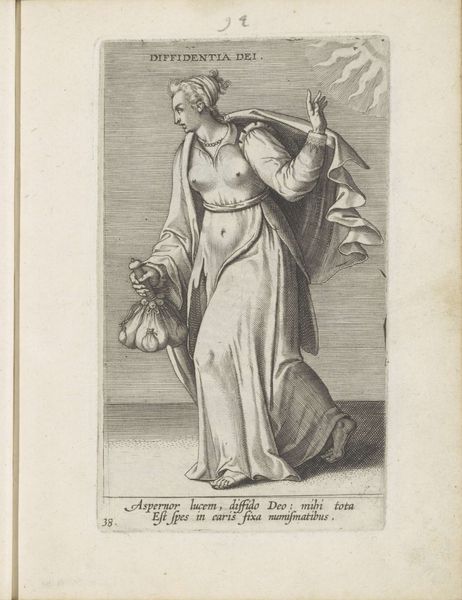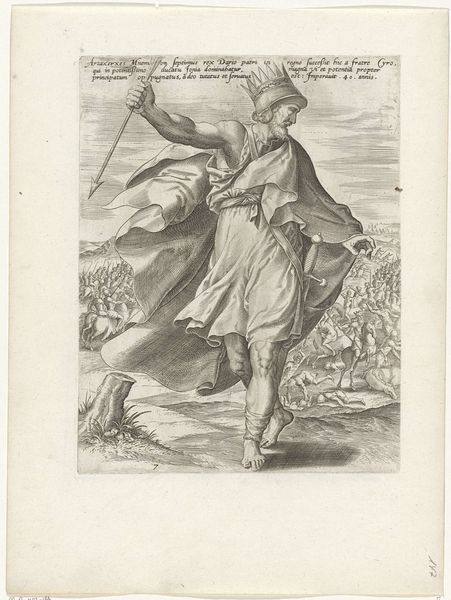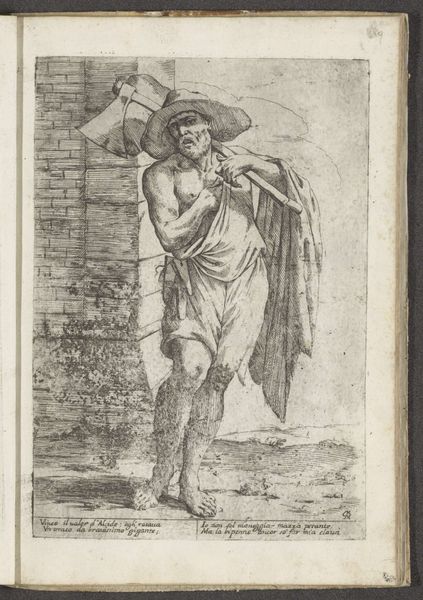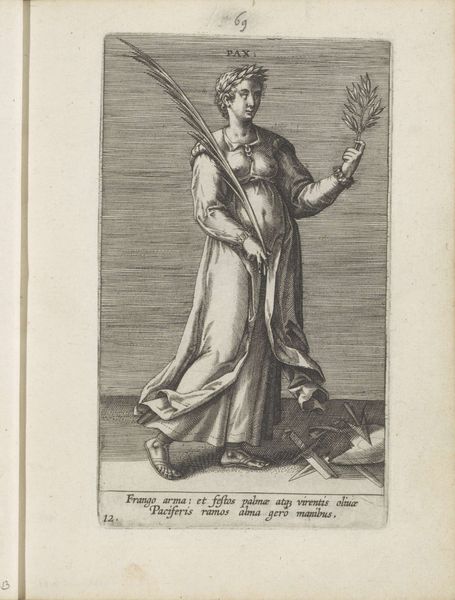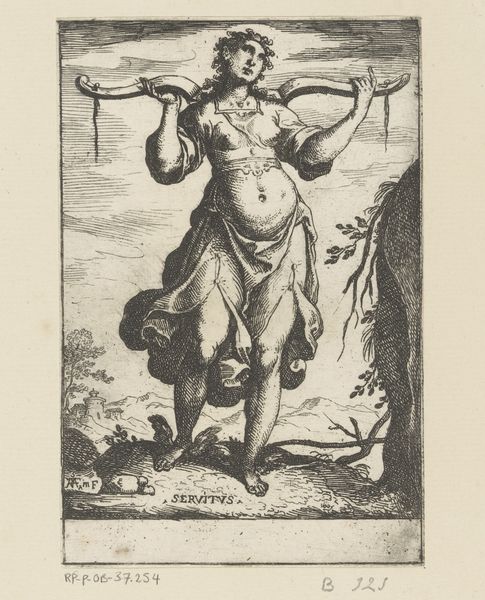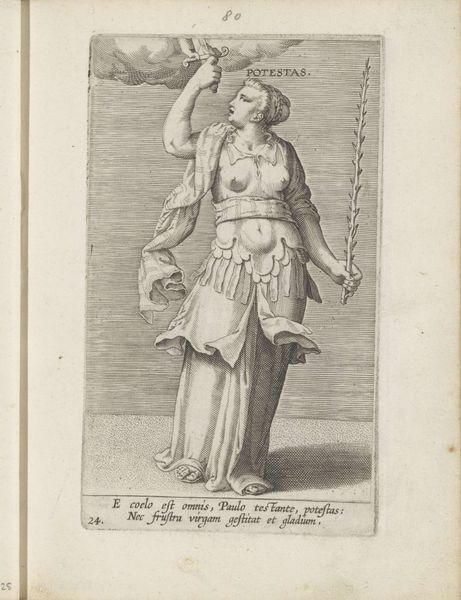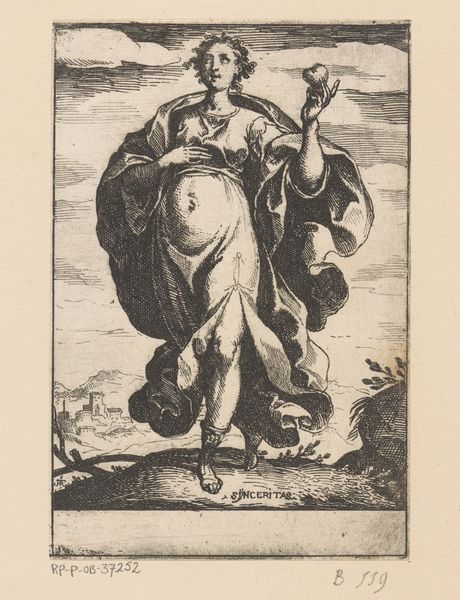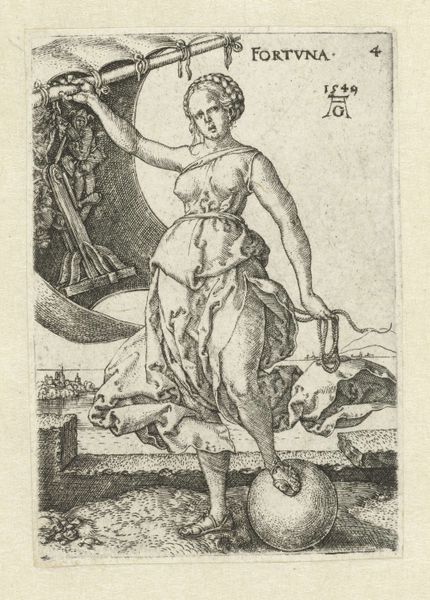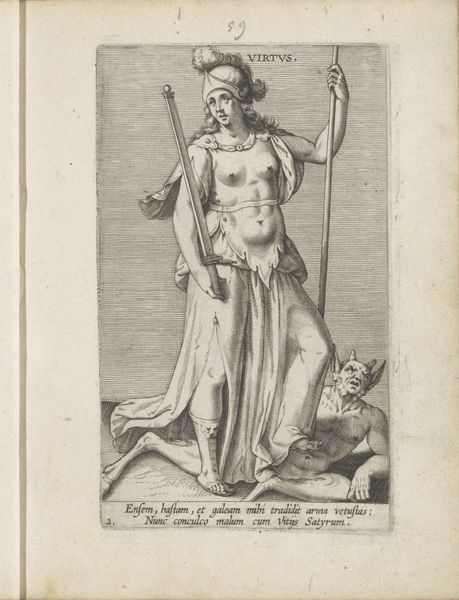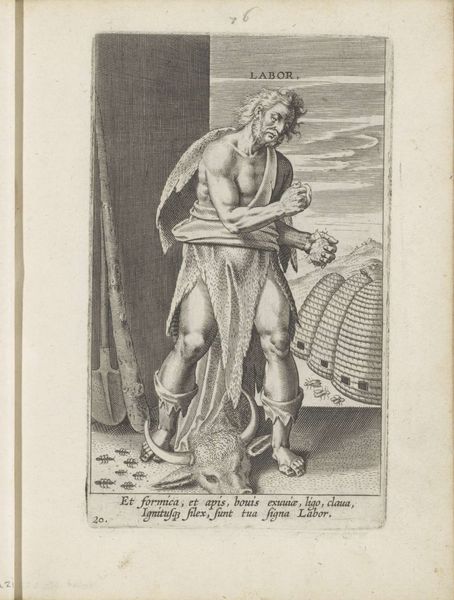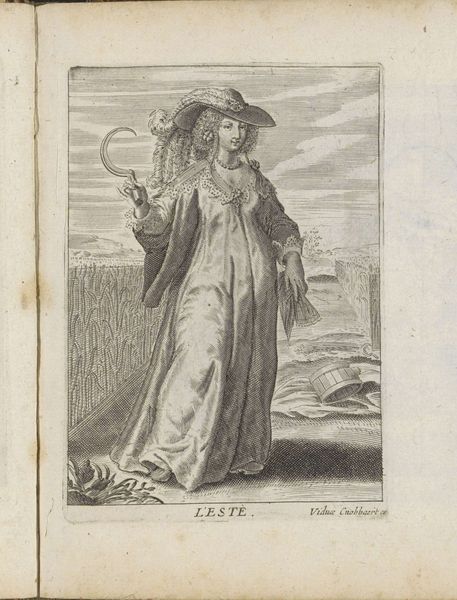
print, paper, engraving
#
allegory
# print
#
figuration
#
paper
#
northern-renaissance
#
engraving
Dimensions: height 158 mm, width 81 mm
Copyright: Rijks Museum: Open Domain
This print, Vlijt, was made in the late 16th century by Philips Galle, using the intaglio technique of engraving. Think of this process as a kind of controlled injury to the metal plate. Galle would have used a tool called a burin to manually carve lines into the copper, which would then hold ink and transfer to the paper when printed. The image embodies diligence, with a figure actively in motion, holding a whip above her head. Her energy seems captured in the very lines of the print. Galle’s technique demanded precision and patience, as he meticulously built up the image line by line. This was not a quick process. Consider the social context: printmaking at this time was becoming increasingly important, disseminating images and ideas widely across Europe. Galle, as a printmaker and publisher, was at the heart of this new information economy. The concept of "diligence" itself was deeply tied to the rise of capitalism, emphasizing the moral value of hard work. In Vlijt, Galle not only depicts diligence, but also embodies it through his own labor-intensive process. This print reminds us that even in the age of mechanical reproduction, skilled handwork remains essential.
Comments
No comments
Be the first to comment and join the conversation on the ultimate creative platform.

